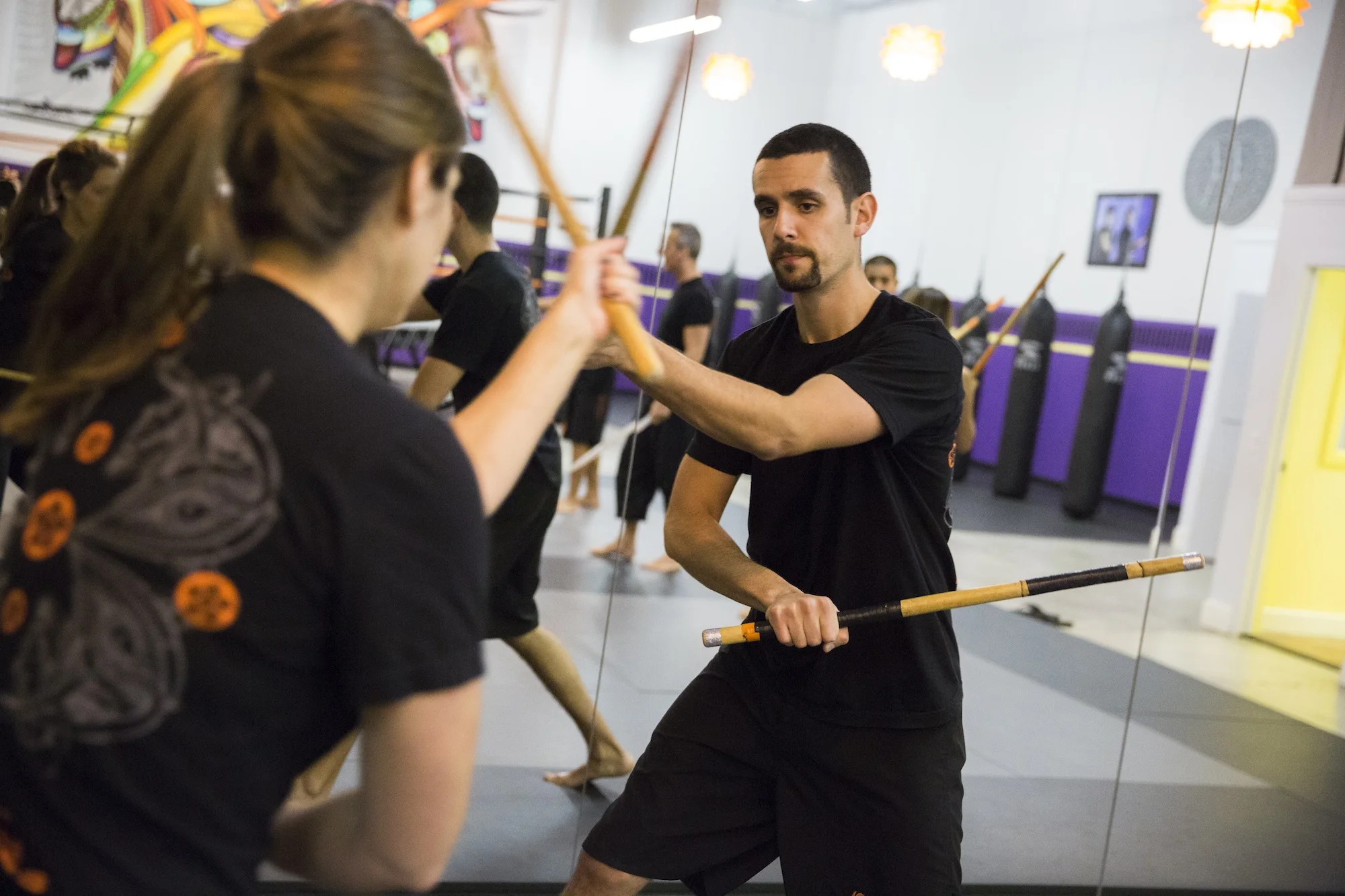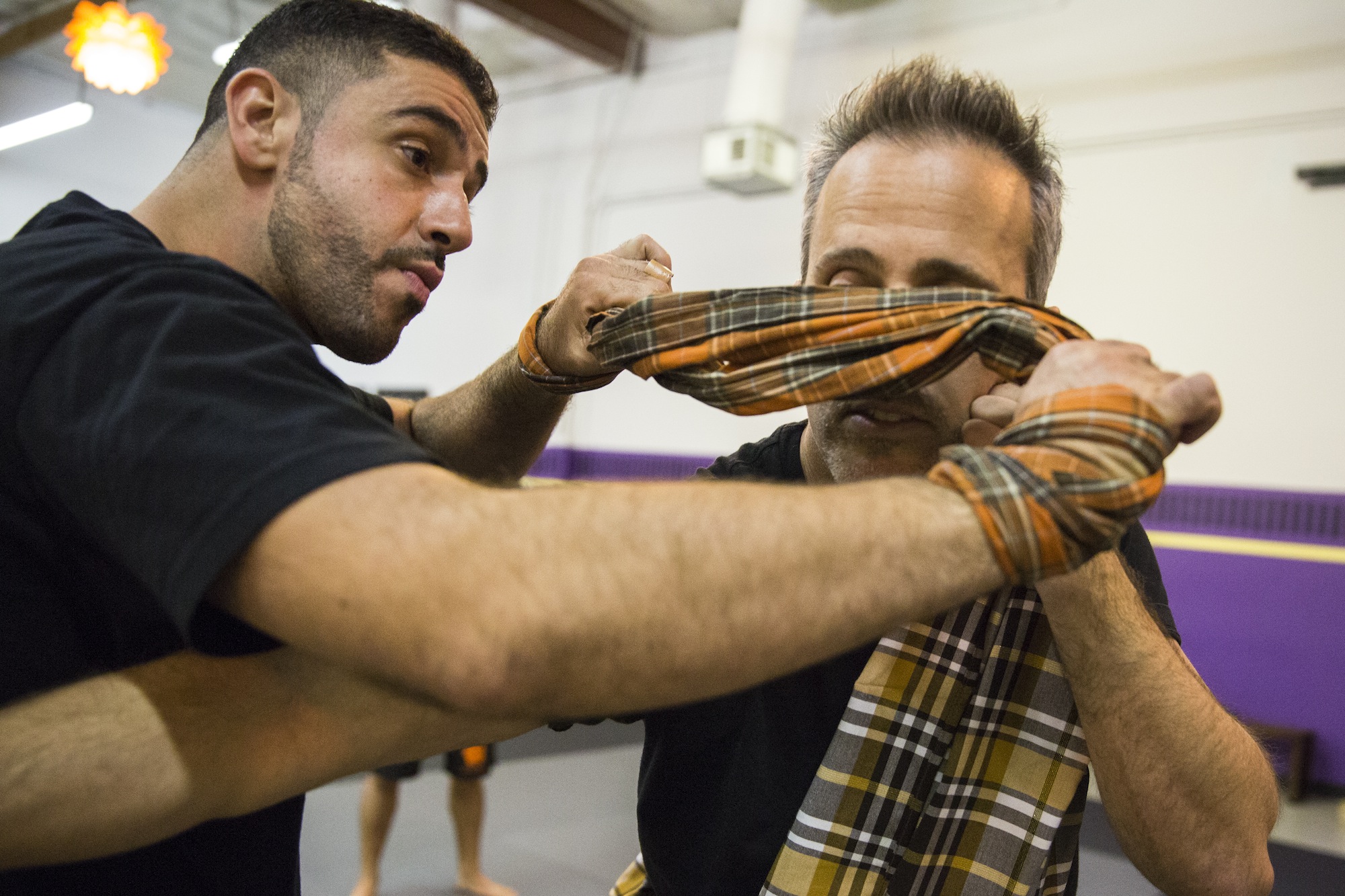Kali, also known as Eskrima and Arnis, is the national sport and martial art of the Philippines. The three are roughly interchangeable umbrella terms for the traditional martial arts of the Philippines (“Filipino Martial Arts,” or FMA) that emphasize weapon-based fighting with sticks, knives, bladed weapons and various improvised weapons.
It is also known as Estoque (Spanish for rapier), Estocada (Spanish for thrust or stab) and Garrote (Spanish for club). In Luzon they may go by the name of Arnis de Mano, Pananandata (use of weapons), Sinawali (Pampanga, “to weave”), Sitbatan & kalirongan (Pangasinan), Didya and Kabaroan (Ilocos region). In the Visayas and Mindanao, these martial arts have been referred to as eskrima, kali, kaliradman and pagaradman. Kuntaw and silat are separate martial arts that are also practiced in the Philippine islands.
Kali also includes hand-to-hand combat, joint locks, grappling and weapon disarming techniques. Although in general, emphasis is put on weapons for these arts, some systems put empty hands as the primary focus and some old school systems do not teach weapons at all.
For all intents and purposes, kali, eskrima and arnis all refer to the same family of Filipino weapon-based martial arts and fighting systems. Both Arnis and Eskrima are loans from Spanish: Arnis comes from arnés, Old Spanish for armor (harness is an archaic English term for armor, which comes from the same roots as the Spanish term). It is said to derive from the armor costumes used in Moro-moro stage plays where actors fought mock battles using wooden swords.
Arnes is also an archaic Spanish term for weapon, like in the following sentence from “Ilustracion de la Deztreza Indiana” by Francisco Santos de la Paz in 1712: “Siendo tan infalible la execucion desta doctrina, que no solo consigue ésta superioridad en concurso de armas iguales, sino tambien hallandose el contrario con la aparente ventaja de venir armado de los dos arneses, Espada, y Daga; pues aun con ellos experimenta la dificultad de resistir á esta Espada sola…”
“The execution of this doctrine is so infallible, that not only does it prove its superiority in contests with equal arms, but also when finding the opponent with the apparent advantage of showing up armed with two weapons, sword and dagger. For, even armed with those, experience shows the difficulty of resisting the single sword used in this way…”
Eskrima (also spelled Escrima) is a Filipinization of the Spanish word for fencing, Esgrima. Their cognate in French is Escrime and is related to the English term skirmish. Kali has multiple theories on its origin: One theory is that the word comes from tjakalele, a tribal style of stick-fencing from Indonesia. This is supported by the similarities between tjakalele and eskrima techniques, as well as Mindanao’s proximity to Indonesia. According to Guro Dan Inosanto, Kali is a portmanteau of the Cebuano words “kamot”, meaning hand, and “lihok”, meaning motion. In the Ilocano language, kali means to dig and to stab. There exist numerous similar terms of reference for martial arts such as kalirongan , kaliradman and pagkalikali.
These may be the origin of the term kali or they may have evolved from it. According to Grandmaster Vic Sanchez, the Pangasinense term Kalirongan means “Karunungan ng Lihim” or Wisdom of (the) Secret (fighting arts) or “Wisdom of Kali”. In his book KALI – History of a Forbidden Filipino Fighting Arts, Fred Lazo put forward that Kali was an ancient root word for blade, and that the Filipino words for right hand (kanan) and left hand (kaliwa) are contractions of the terms “way of the blade” (kali daanan) and “without blade” (kali wala) as weapons are usually held with the right hand and the left hand is typically empty. In their book Cebuano Eskrima: Beyond the Myth however, Dr. Ned Nepangue and Celestino Macachor contend that the term Kali in reference to Filipino martial arts did not exist until the Buenaventura Mirafuente wrote in the preface of the first known published book on Arnis, “Mga Karunungan sa Larong Arnis” by Placido Yambao, the term Kali as the native mother fighting art of the Philippine islands.
Most likely, Kali derives from the pre-Hispanic Filipino term for blades and fencing, Calis, documented by Ferdinand Magellan’s expedition chronicler Antonio Pigafetta during their journey through the Visayas and in old Spanish to Filipino Mother Tongue dictionary and vocabulary books dating from 1612 to the late 1800s, such as in Vocabulario de Lengua Tagala by Fr. Pedro de San Buenaventura. The term calis in various forms was present in these old Spanish documents in Ilocano, Kapampangan, Ibanag (calit), Tagalog, Bicolano (caris), Waray (caris), Hiligaynon and Cebuano (calix, baladao – “kalis balaraw/dagger” and cales). In some of these dictionaries, the term calis refers to a sword or knife kris or keris, while in others it refers to both swords and knives and their usage as well as a form of esgrima stick fighting. While Mirafuente posits that the original term was “Kali” and that the letter “S” was added later, the late Grandmaster Remy Presas suggests that the “S” was dropped in modern times and became presently more known as “Kali” in FMA circles.
Practitioners of the arts are called Arnisador (male, plural arnisadores) and Arnisadora (female, plural arnisadoras) for those who call theirs Arnis, Eskrimador (male, plural eskrimadores) or Eskrimadora (female, plural eskrimadoras) for those who call their art Eskrima, and Kalista or Mangangali for those who practice Kali.


